这是一群绘画的硬汉,这里呈现的绘画方式是一个特别东北的方式,大而凛冽的,大像那里的旷野,凛冽如那方冬天的风。这里呈现的绘画内容是一种在当下中国已经显得特别珍贵的“鲁迅的”。
毕建业《松树和方块》 390x220cm 布面丙烯 2011
大,表现着可怕的欲望的大,不惜代价地彰显自己存在的大。毕建业说他画《松树与方块》时治好了自己的恐高症,因为那作品的竖高是他从来没有尝试过的。那大大得就像在酒吧里东北男人和别的男人掰手腕使出来的那把劲,就是要把娘们搞到手的架势(请原谅这句话里的性别政治不正确)。这些大大的绘画,让他们有了性格和层面。
耿旖旎 《高加索英魂》 80x70cm 布面油画 2021
无畏的、疯狂的、胆大妄为的、极端好斗的、真他妈过瘾的、东北人臭名昭著的酒蒙子(东北话酒癫子)风的。就像传说中李白喝醉酒之后写出来的,一种酒精烧着了神经之后的诗歌,他们则是为了掩饰一种羞涩和孤僻而喝了颜料(当然是和着酒精的!),释放出来的自由真他妈地大得吓人。这一切的疯狂都歇斯底里地泼洒在画布那儿了。
凛冽,像好酒划过舌头。他们竭尽全力地逃避大多数中国绘画者经过防腐净化处理的绘画方式,拒绝接受行尸走肉的默许,他们绝对没有中国古代绘画的那种修辞,不需要七拐八弯就能够获得他们想说什么。在他们早期的创作中已经有了很浓烈的道德焦虑意识。他们不避讳看见的现实,那么真实地将看见的现实扔到画布上,因而也就扔到了公众眼前,就像商成祥在《发现》里扔到我们面前的那一大滩垃圾。《远方》和《安全出口》尽管都创作于十几年前,作品摹写的那一代青年的迷惘、彷徨、苦闷放到现在依然那么尖利和贴切。《心灵的透支》甚至仿佛在预测当下的“内卷之后的躺平和摆烂”。《浮夸物》看似是现实主义的,然而其魔幻和超现实意味的确能够让我们对自己生活的当下产生联想和会心的一笑。《安眠》让我们徘徊在焦虑和治愈的幻觉之间不得安宁。这些创作尽管已经过去十多年了,为什么还能够让我们感觉直指人心?应该是一种“鲁迅式的”直面现实的方式造就的吧。
宋元元 《浮夸物》布面油画 300x200cm 2011
这是一种需要勇气的创作,这勇气已经胜过了想象力,这想象力已经发酵成为一种暴力,一种绘画的暴力。绘画成为他们输出暴力的出口。那种在画布上光荣地释放出来的精力,那有趣的疯狂,那邪气的抒情(王小霾语)。鲁美当年的学生是中国学院系统里最关照现实的,又是最保持绘画的追求的。按理说,要关照现实,最直接的方式是影像这样的全新的媒介,而他们却执着于绘画,在美院系统里显得那么笨笨的。这是一种不思进取、还是一种对绘画的真正的依恋?作为一个以创新为要义的职务,艺术家的生命维系于与艺术史的对话。脱离开传统的领域,如杜尚一样用“白板化”清零的方式去创新是最容易的(不过话说回来,杜尚之后再做“非艺术”也已经不是那么容易了)。要在绘画这个传统领域创新,本身就是一种注定无法实现的使命?他们为什么要从绘画这个起点向前行?他们又走到了哪里?这个展览不可能给一个答案,但是,我感觉他们已经从影响他们很深的王兴伟那里朝前进了,尽管那进步是不可能惊人的,仿佛是自己拽着自己的头发向前。
他们作品的内容也像这个学校得了那个名字的作家一样。“鲁迅的”这个形容词包含了太多的内涵,但是相较于当下中国当代艺术的创作,十多年前这群学生的创作还是担得起这个形容词的。沈阳这个城市的衰败现实让他们被逼去用现实主义这个鲁美传统去思索,如果说学生期的创作还是机械的“反映论”的对于现实的回应,而他们当下的创作虽然还没有消解自己这种凌厉,那凌厉已经被隐藏或者更加隐晦了,已经退避到一层被绘画语言包裹的偏形式的创作里去了。用潘赫的话来说,他们是在用对具像的描绘来反思绘画语言,而这又必然使得作品和现实的关系受到阻碍,当要从绘画语言的角度去解构现实的时候,必然使得现实被掩藏到绘画的形式里,变成一种二手现实,那种迂回虽然还是回到了现实本身,但是这时现实本身的力量已经削弱了,不知道这是否是成熟的表现。我还是更喜欢那早期的凌厉。
贾蔼力 《红》 50x36cm 版画 28/40 2012
当然,无论曾是青年的他们还是已届中年的他们,都是摆脱了冷气,在向前走的,能够发声发热发光就尽力去发,尽管那声那热那光只是萤火虫一般,他们没有等候炬火。他们与现实的连接放在各大美术学院的创作中来比较,仍然是出跳的。尼采说绘画的时候,直截了当地说“绘画的,太绘画的”。因此,我想借尼采的句式来形容这些作品:“鲁迅的,太鲁迅的”,希望观众不会认为这个形容太虚妄。这是这个展览得名“鲁流”的第一层意思。
刚刚认识一个特别懂酒的朋友,她不去买那些人人皆知的大品牌,而是靠自己的舌头去发现小众的“独善其身”的酒庄。那天她形容发现的一款新西兰Auntsfield酒庄的长相思白葡萄酒在嘴巴里的凛冽感的时候,我第一时间想到的就是这个展览里的这些作品。持如此收藏逻辑的收藏者才能真正感受收藏(无论你收藏的是什么)的“顶流感”吧。葡萄酒业里竟然也有一群不屈服商业大鳄或者巨头高价诱惑的“制酒人”,这还真有点突破我对这个资本如此密集的行业的认识。正值又一年各大美术学院的毕业季,我想感叹的是,当下我已经不太能够感受到那萤火虫的热与光了,也许是我自己感觉钝化了。所以,我更感觉鲁美这一群的创作那么值得“宝贝”。
商成祥《最后的吻》 布面油画 50x40cm 2021
从2007年前收藏闫珩的《远方》到现在,15年过去了,这里呈现的绝大多数是鲁美当年毕业学生的毕业创作或者在校创作。这个展览中的艺术家们(尤其在他们创作早期)多么像艺术圈里追求“独立与个性”的“酿酒人”啊。当年青涩的青年,现在已经以成熟艺术家的身份在生涯的路上豪迈地向前。2011年蓝顶曾经有过一次以鲁迅美术学院艺术家为主的展览(《社会体验与精神叙事》,蓝顶美术馆),那次展览也已经过去11年了。这次展览和11年前那一次形成一个有趣的对话;为了支持这个展览,许多艺术家都选择了一幅他们当下创作的作品,作为一个参照呈现给观众。这让这个展览增添了一种特别的、带有一种回顾性的意味,形成另外一个层面的对话。鲁美在这个展览里呈现出来的像是一条流动的河,我们看到的是特定艺术家在10-15年间是如何从一个状态到了另外一个状态,这“流”在这里也可以做动词看,此“鲁流”的第二层意思。
所有画过的都是值得的,他们取悦画布,无论得手与否,绘画是一件了不起的事情,大不了,我跟自己玩,所以他们大多数还固执地呆在沈阳这个已经被遗忘的中心城市。因为独善其身,所以终成一派,可能自成一派会被人质疑,不过在我眼里,他们是可以被这么看的。这是“鲁流”(鲁美学派)的第三层意思。
闫珩 《心灵的透支》3号 150x200cm 布面油画 2007
我认为中国当代艺术曾经辉煌的一代现在已经历变得要么艺术死亡、要么精神死亡,愿鲁流的这一批不会被不该吞噬他们的东西吞噬,永远可以“鲁迅的,更鲁迅的”。
黄亮《安眠 》布面油画 111x180cm 200x340cm 2007These are tough guys at painting, whose works are quite Northeast China style—big and crisp, like the wilderness and winter wind. Right here, the paintings are quite precious “Lu Xun Genre”, rarely seen in modern China.Bigness demonstrates terrifying desires and its own existence at any cost. Bi Jianye claimed that his height-phobia was cured when painting Pine and Cube because it was nothing like he has ever tried before. The bigness can also be understood as the strength in a club fight, and maybe even the desire for a lady (please forgive the coarseness here). These big and bigger paintings give them features and layers.These paintings are fearless, crazy, brave, fierce and to the point, like the notorious alcoholic style in Northeast China. They were like poems Li Bai would come up with when drunken, burning with alcohol. These painters drink paints to cover shyness, only to release big freedom. Such craziness is all spread over the canvas hysterically.Crispness is like alcohol touching the tongue. They try best to avoid the purified painting techniques that most of Chinese painters use. They refuse the approval of morbid community and lack the rhetoric expression of ancient Chinese painting, which would be easy to understand by the audience. In their early works, there were tense consciousness of morality and anxiety. They never avoid reality and throw it on canvas—therefore to the face of the public. Such examples include the big pile of trash in Discovery by Shang Chengxiang. Faraway and Safety Exit were created more than 10 years ago, while the anxiety, anger and loss are still applicable and sharp today. Overloaded Mind even predicted the “doing nothing” in modern world. Exaggeration seems realistic while the magic and supernatural senses will connect us to the real life and amuse us. Safe Sleep puts us restless between anxiety and healing. These paintings can still make us feel things deep in the heart. The reason might be “Lu Xun Genre”, which faces the reality.Such works require courage over imagination. Such imagination has developed into a violence in painting—an exit for such energy which is thus released on the canvas. Such energies are interestingly crazy and vile emotional (by Wang Xiaomai). Students from Lu Xun Academy of Fine Arts are the most conscious of reality while remaining the pursuit of painting. In theory, such consciousness of reality shall be realized by new media like images but these students cling to paintings in a seemingly clumsy way. Is it stubbornness or real love towards painting? Artists should prioritize creativity and connect with dialogue with art history. It would be easy to create works like Duchamp who abandoned the traditional ways altogether. (In another way, it is uneasy for “non-art” after Duchamp). It is a doomed mission to create in painting—such a traditional field? Why would they start from painting and where are they going? Such exhibition cannot provide an answer. However, I sense their progress towards Wang Xingwei whose influence has already been quite deep. The progress cannot be amazing—like dragging ahead by their own hair.Their works are much like Lu Xun, after whom the college was named. “Lu Xun Genre” is so comprehensive while the works by these students can really own it compared with the modern art works in today China. The corruption of the city Shenyang made these students to explore from a realistic perspective—a tradition in the college. The early works created during college years were more of a mechanical reaction towards reality while the more recent works have covered such crispness in depth—wrapped up in painting language. In Pan He’s words, they are reflecting upon painting language with image description, which will inevitably hinder the relation between works and reality. When deconstructing reality from the perspective of painting language, such reality will be hidden in the form of paintings and becomes a second-hand reality. Such a detour still can return to reality—a reality weakened in strength. Maybe it’s a sign of maturity, but for me, I prefer the earlier crispness in their works.Without doubt, whether being young or middle-aged, they are far from being cool and keep walking ahead, shining and being heard. Though such voices and light are little, they didn’t wait for rescue. Their works are still outstanding when put among their peers in terms of connection with reality. Nietzsche once remarked, “painting, too painting”. Based on such remark, I would comment on these paintings by “Lu Xun, too Lu Xun Genre”. I hope the audience wouldn’t find it too vane. This is the first reason why this exhibition is named “LAFA Genre”.I got acquainted with a friend fond of wines. She won’t go for the big brands and relies on her own tastes to find the small and refined wines. One day, she was describing about a white win in Auntsfield, New Zealand, using the word “crisp”—immediately reminding me of the works in this exhibition. Curators of such logic can really feel the top-notch in collections. In wine industry where capitals are so fiercely competing, I didn’t think there would be professionals unyielding to merchants. Now, it’s the time for graduation for colleges of fine art. For me, I regret to say that I cannot feel the tiny voice and light of those students—maybe due to deterioration of my senses. Therefore, I feel these works so precious by graduates from Lu Xun Academy of Fine Arts.15 years have passed since the collection of Faraway painted by Yan Heng in 2007. This exhibition demonstrates mostly the works these students made at graduation or during the college years. The artists are mostly like the individual wine brewers in fine arts. The once clumsy young artists are now mature and progressive achievers. In 2011, Blue Roof Museum held an exhibition featured by artists from Lu Xun Academy of Fine Arts—already 11 years ago. This exhibition echoes with the one 11 years ago. To support this exhibition, many artists have chosen a piece of work created recently for a reference to the audience. Such choices have made the exhibition special and retrospective—forming a dialogue at another level. In this exhibition, Lu Xun Academy of Fine Arts is like a flowing river, in which certain artists can show their change of states during 10-15 years. Such flow is also the reason why this exhibition is named “LAFA Genre”.All the paintings are worthwhile. Artists please canvas, handy or not. Painting is a big thing and painters can always please themselves. Therefore, these artists choose to stay in Shenyang, the forgotten central city of Notheast. Because they are mostly kept to themselves, they finally form a community, a shool, a genre, although which might be doubted. For me, they are a community. This is the third layer of meaning for this exhibition.I believe that the once glorious generation in Chinese modern art has become dead either in arts or in spirits. Hope these artists won’t perish and can always be “Lu Xun style, and more Lu Xun style”. 参展艺术家:毕建业、谷晓艳、耿旖旎、黄亮、贾蔼力、历宝江、龙智、撇条君、商成祥、宋元元、闫珩、于重文协办单位:锁唇国际酒业股份有限公司、干露葡萄酒集团 、宇夏文化、成都采采文化展览地址:成都天府新区新兴街道庙山村166号蓝顶美术馆1号厅媒体支持: 雅昌艺术网、四川美术网、在艺、Hi艺起、乐游玩物志、眺与读、一采
【观展须知】
受新冠疫情影响进入场馆请佩戴好口罩,出示健康码,配合工作人员测量体温,谢谢配合。
【停车须知】
请将车辆停放到蓝顶公共停车场。
【注意事项】
艺术品脆弱请勿触碰,文明观展。
-----------成都蓝顶美术馆-----------想了解更多展览信息及艺术资讯可长按下方二维码关注我们周二至周日 10:00 - 17:00(17:00停止入馆)蓝顶美术馆官网:http://www.blueroofmuseum.com/

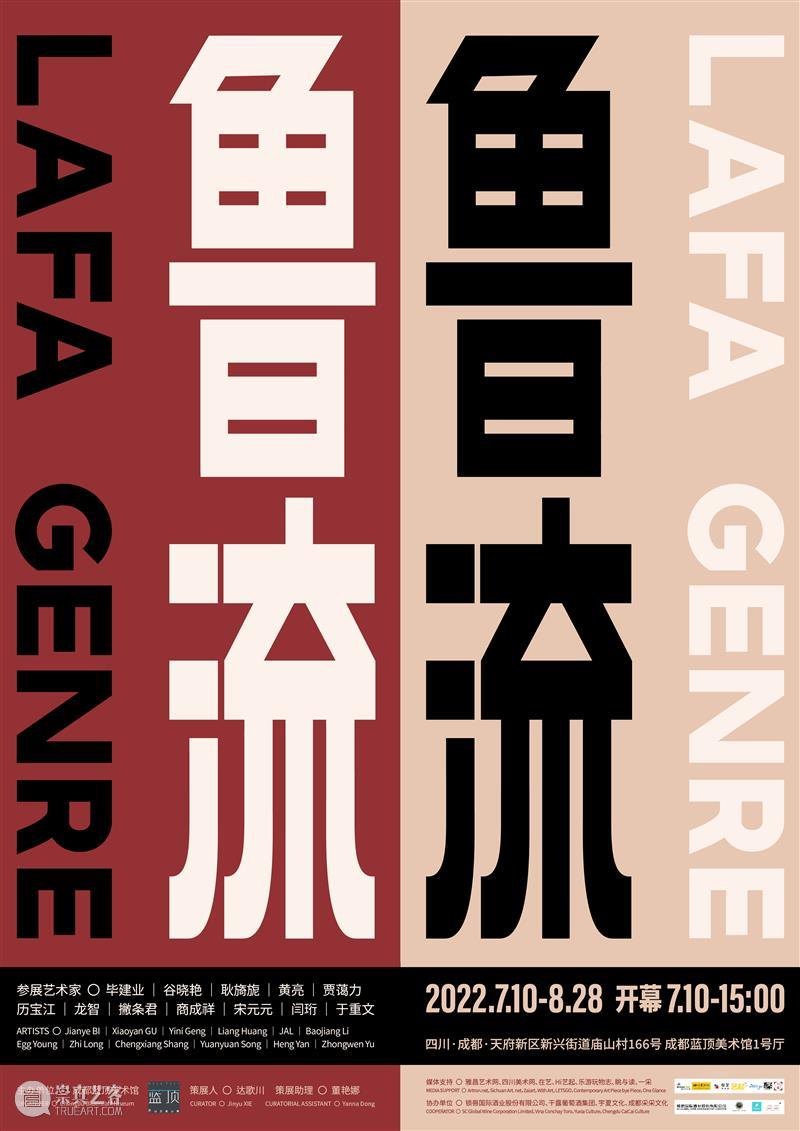
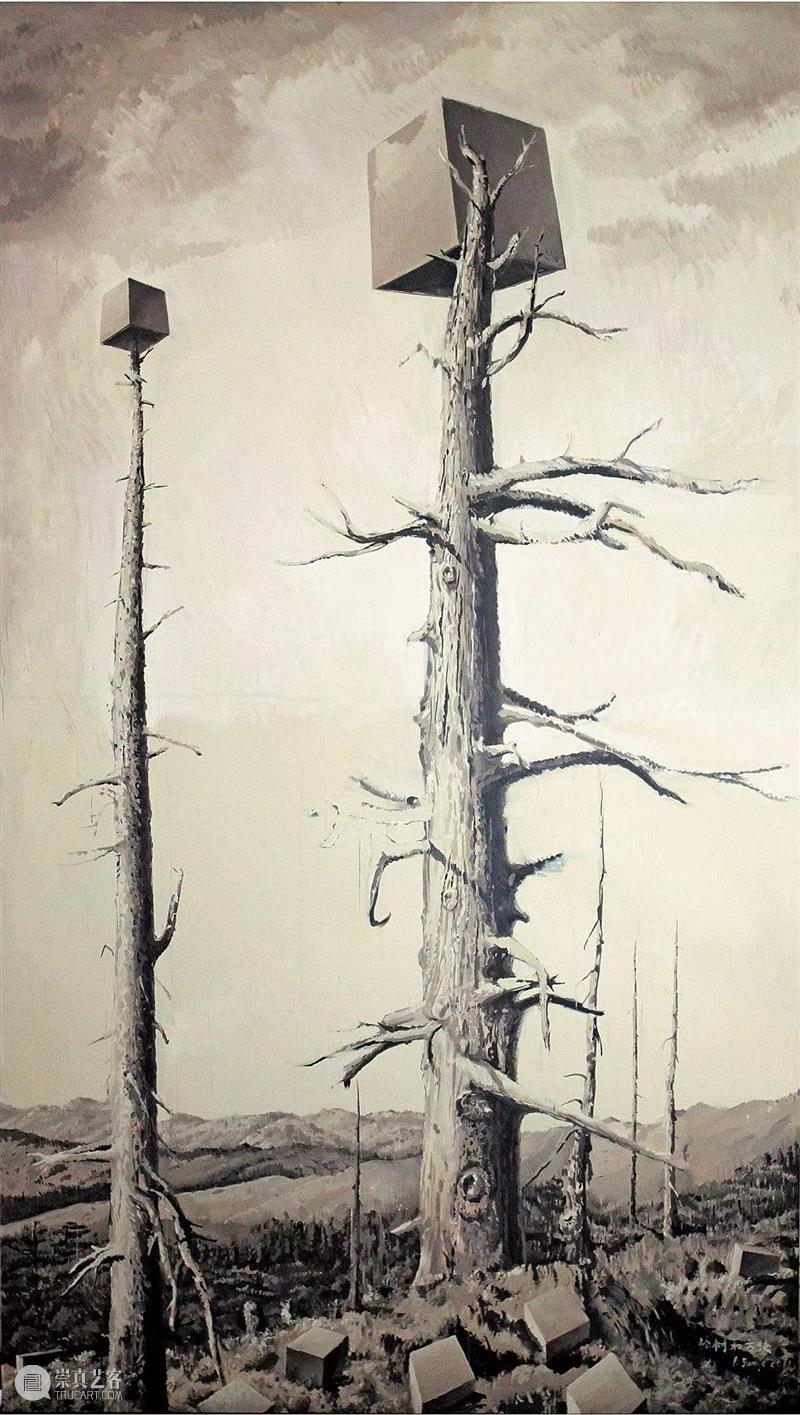
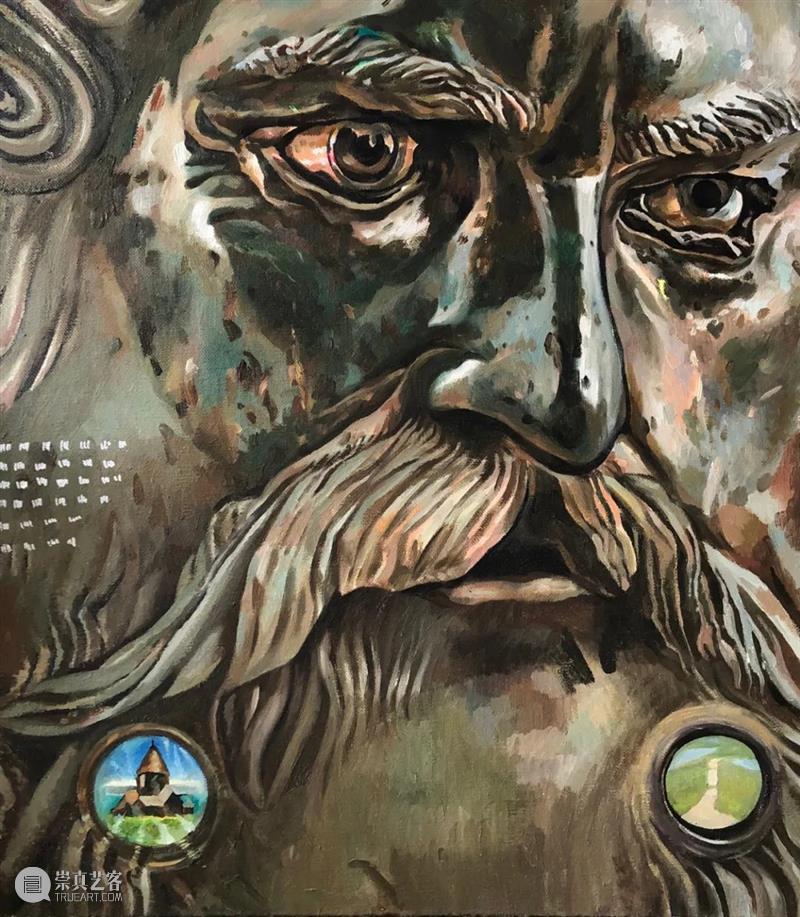
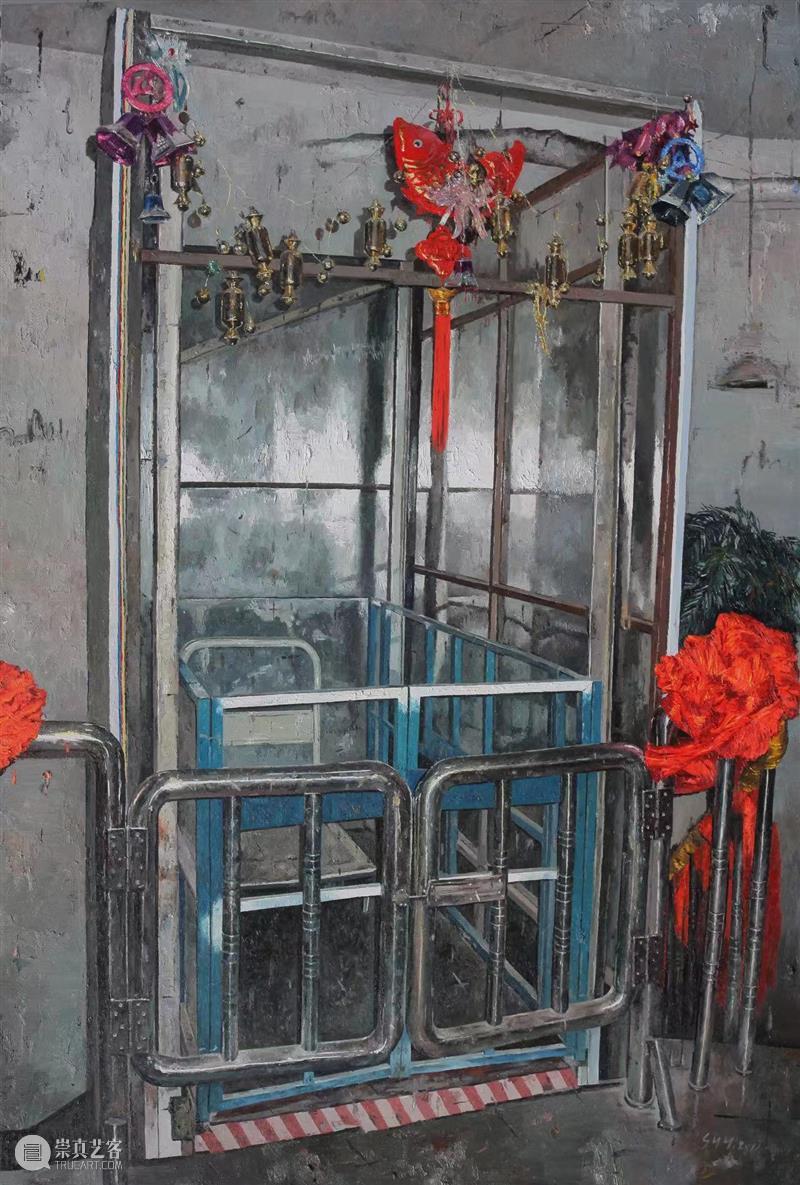
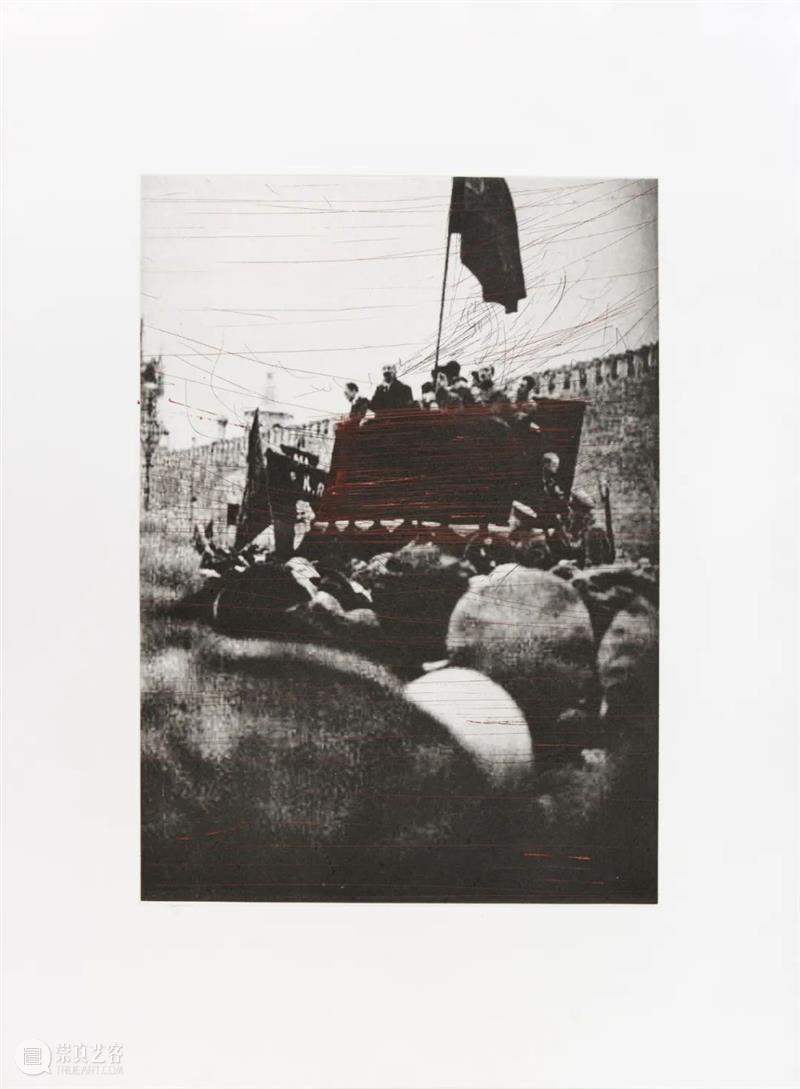
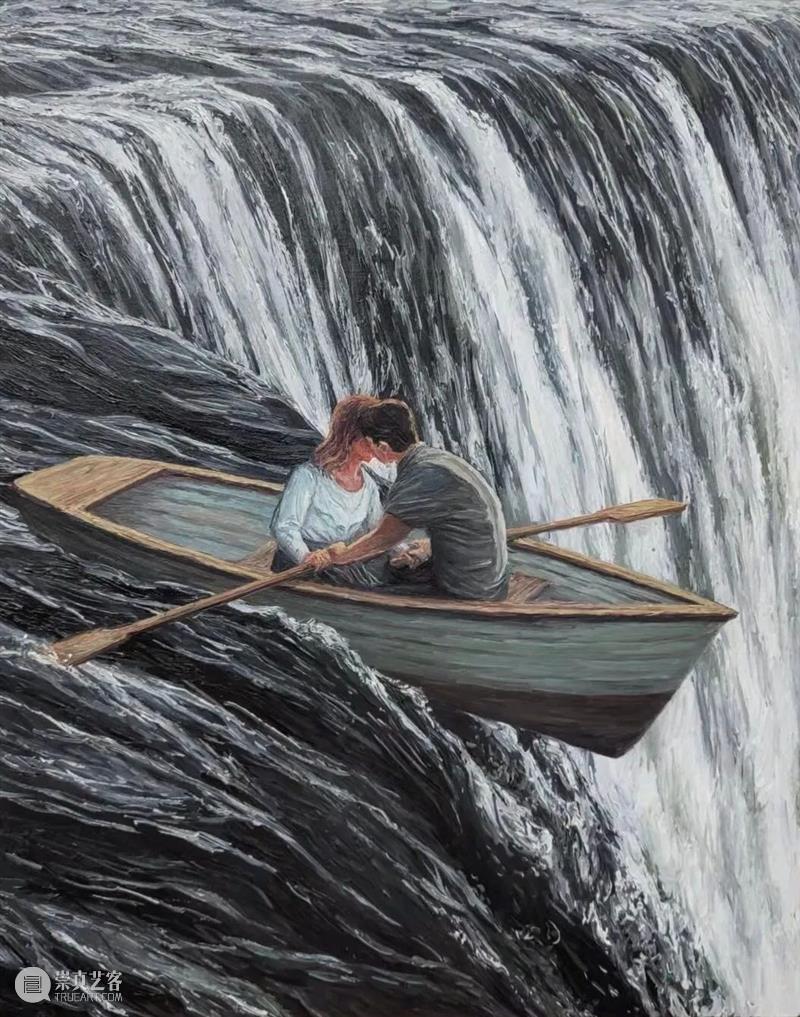
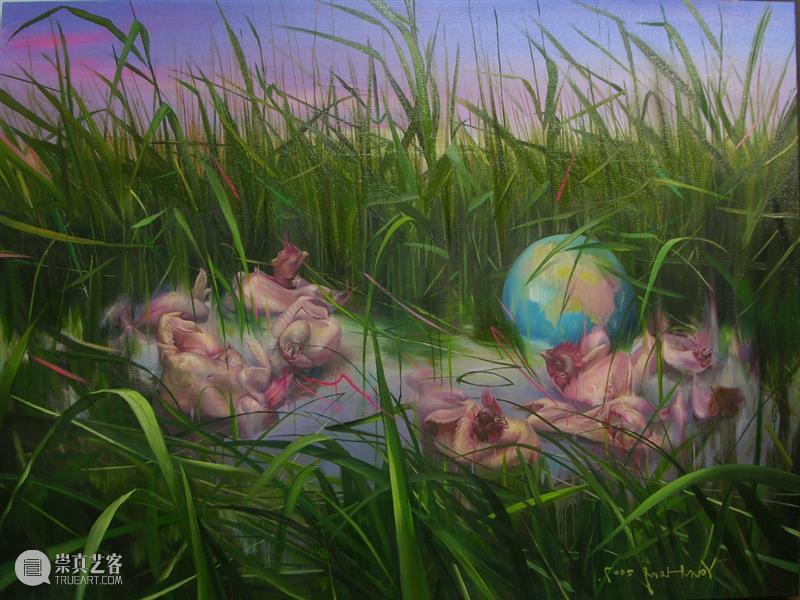
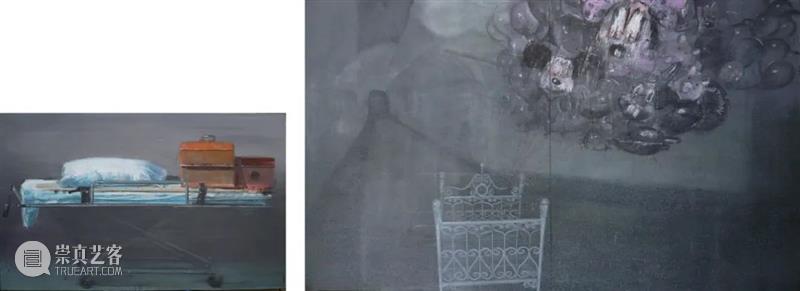
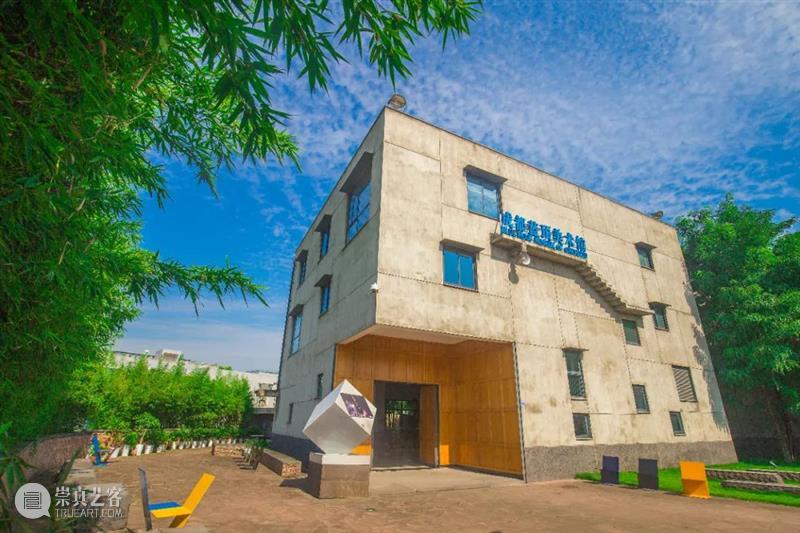


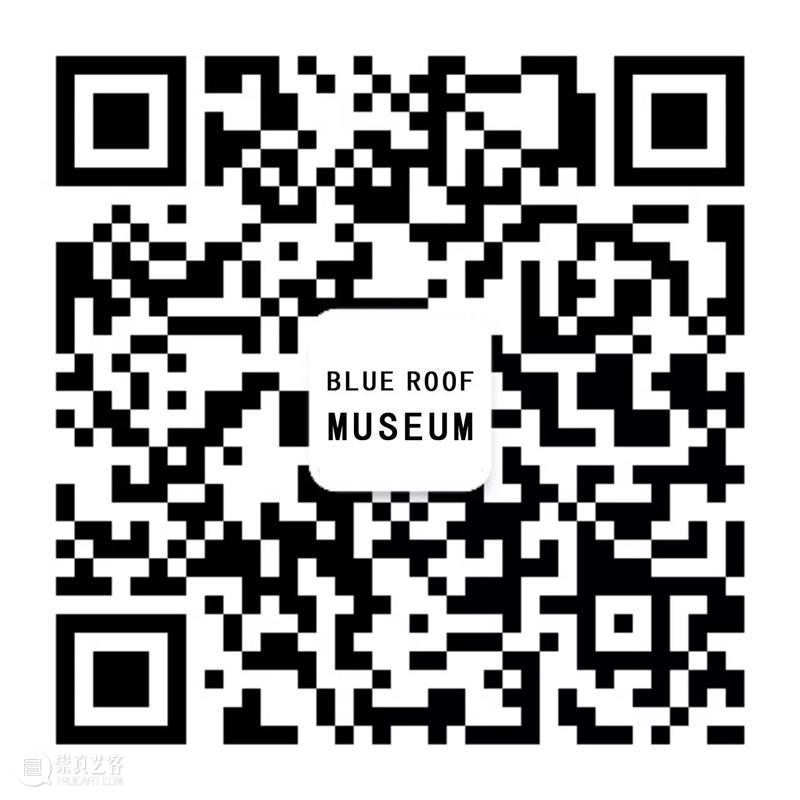

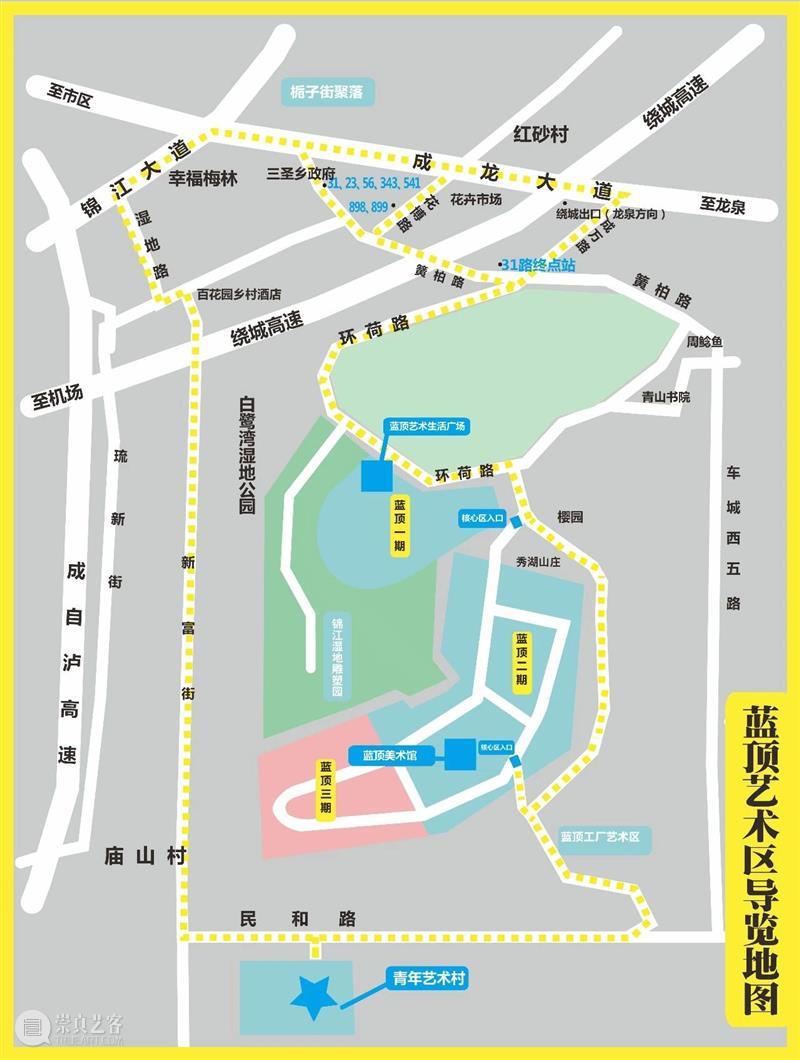





 分享
分享